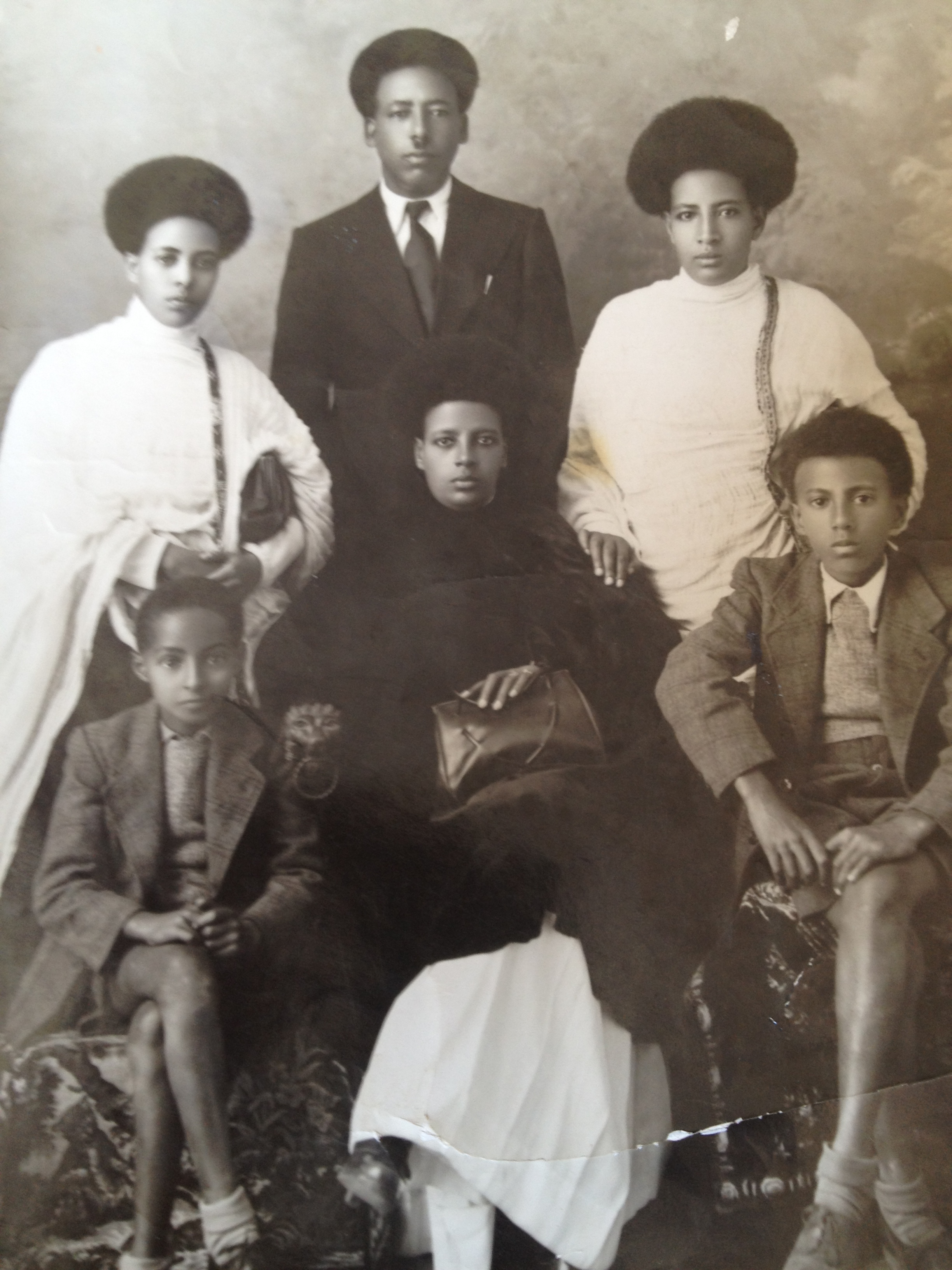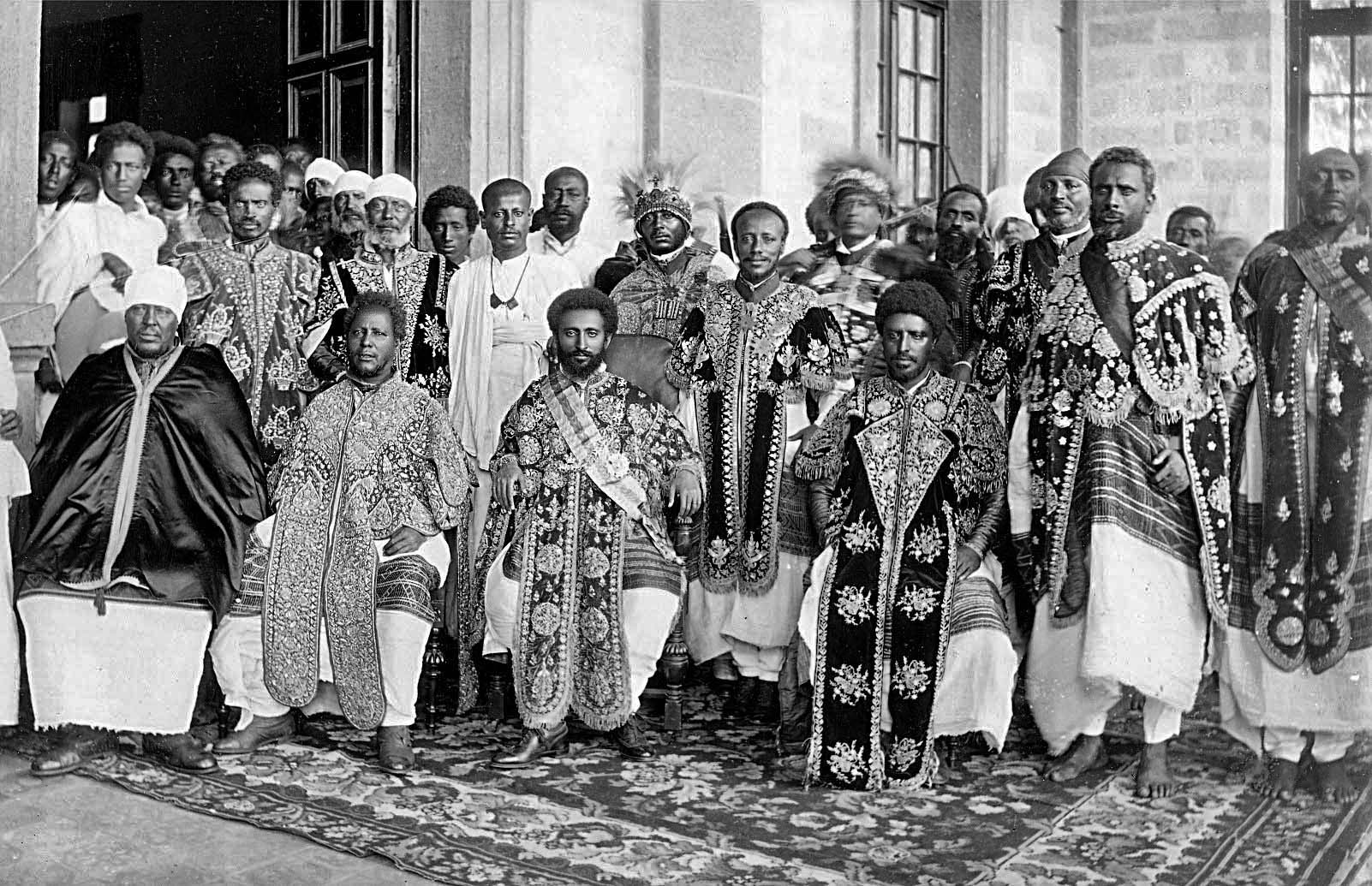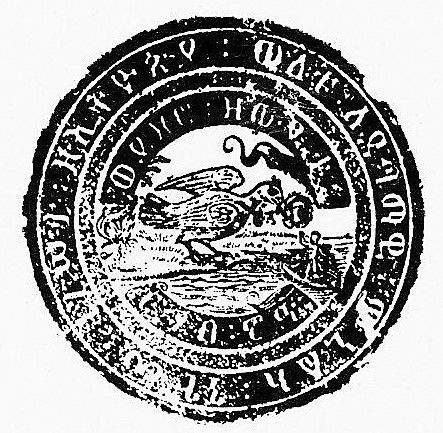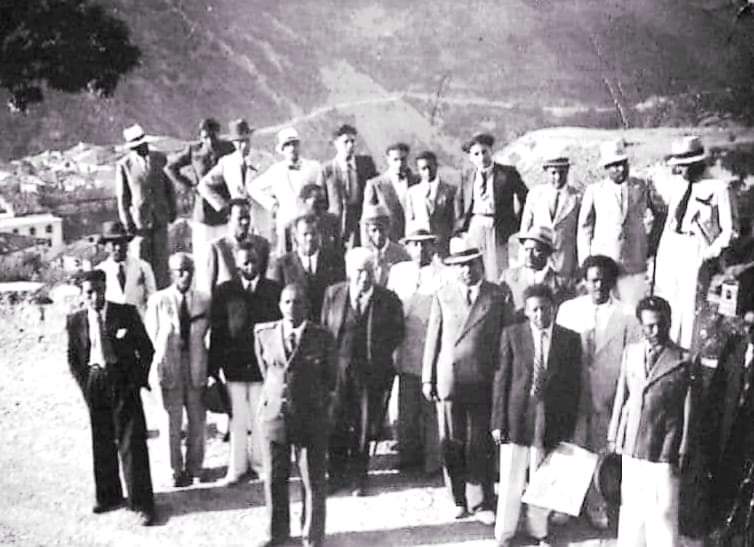|
Seifu Mikael
'' Lij'' Seifu Mikael ( Amharic: ልጅ ሰይፉ ሚካኤል, Säyfu Mikāēl, also Sayfu Mikael, Seifu Michael) was an Ethiopian noble, member of the Solomonic dynasty, belonging to the aristocratic Amhara family from Ankober Shewa. He was the grandson of ''Dejazmatch'' Mekuria Tesfaye of Menz, a prominent general and a cousin of Emperor Menelik II of Ethiopia. A public figure, educated in Paris at Sorbonne; one of the first few nobles who started paying salaries to their household servants advocating freedom of slaves and an avid supporter of Ras Tafari in his bid to become an emperor of Ethiopia. He served as Ethiopia's minister to France and Germany while he lived in Europe in the 1910s, Ethiopia's Consul General to Eritrea from 1921 to 1925 and Governor of several districts till the eve of the fascist invasion of Ethiopia. He was also one of the Ethiopian POWs during the Second Italo-Ethiopian War at Asinara. Pursuant to his written accounts, he in the beginning liked and ... [...More Info...] [...Related Items...] OR: [Wikipedia] [Google] [Baidu] |
Ethiopian Aristocratic And Court Titles
Until the end of the Ethiopian monarchy in 1974, there were two categories of nobility in Ethiopia and Eritrea. The Mesafint ( gez, መሳፍንት , modern , singular መስፍን , modern , "prince"), the hereditary nobility, formed the upper echelon of the ruling class. The Mekwanint ( gez, መኳንንት , modern , singular መኰንን , modern or am, መኮንን , "officer") were the appointed nobles, often of humble birth, who formed the bulk of the aristocracy. Until the 20th century, the most powerful people at court were generally members of the ''Mekwanint'' appointed by the monarch, while regionally, the ''Mesafint'' enjoyed greater influence and power. Emperor Haile Selassie greatly curtailed the power of the ''Mesafint'' to the benefit of the ''Mekwanint'', who by then were essentially coterminous with the Ethiopian government. The ''Mekwanint'' were officials who had been granted specific offices in the Abyssinian government or court. Higher ranks from the tit ... [...More Info...] [...Related Items...] OR: [Wikipedia] [Google] [Baidu] |
Amhara People
Amharas ( am, አማራ, Āmara; gez, ዐምሐራ, ʾÄməḥära) are a Semitic-speaking ethnic group which is indigenous to Ethiopia, traditionally inhabiting parts of the northwest Highlands of Ethiopia, particularly inhabiting the Amhara Region. According to the 2007 national census, Amharas numbered 19,867,817 individuals, comprising 26.9% of Ethiopia's population, and they are mostly Oriental Orthodox Christian (members of the Ethiopian Orthodox Tewahedo Church). They are also found within the Ethiopian expatriate community, particularly in North America. They speak Amharic, an Afro-Asiatic language of the Semitic branch which serves as one of the five official languages of Ethiopia. As of 2018, Amharic has over 32 million native speakers and 25 million second language speakers. Various scholars have classified the Amharas and neighboring populations as Abyssinians. Origin The earliest extants of the Amhara as a people, dates to the early 12th century in the mid ... [...More Info...] [...Related Items...] OR: [Wikipedia] [Google] [Baidu] |
Addis Ababa
Addis Ababa (; am, አዲስ አበባ, , new flower ; also known as , lit. "natural spring" in Oromo), is the capital and largest city of Ethiopia. It is also served as major administrative center of the Oromia Region. In the 2007 census, the city's population was estimated to be 2,739,551 inhabitants. Addis Ababa is a highly developed and important cultural, artistic, financial and administrative centre of Ethiopia. Addis Ababa was portrayed in the 15th century as a fortified location called "Barara" that housed the emperors of Ethiopia at the time. Prior to Emperor Dawit II, Barara was completely destroyed during the Ethiopian–Adal War and Oromo expansions. The founding history of Addis Ababa dates back in late 19th-century by Menelik II, Negus of Shewa, in 1886 after finding Mount Entoto unpleasant two years prior. At the time, the city was a resort town; its large mineral spring abundance attracted nobilities of the empire, led them to establish permanent settl ... [...More Info...] [...Related Items...] OR: [Wikipedia] [Google] [Baidu] |
Debre Berhan
Debre Birhan () is a city in central Ethiopia. Located in the Semien Shewa Zone of Amhara Region, about 120 kilometers north east of Addis Ababa on Ethiopian highway 2, the town has an elevation of 2,840 meters, which makes it the highest town of this size in Africa. It was an early capital of Ethiopia and afterwards, with Ankober and Angolalla, was one of the capitals of the kingdom of Shewa. Today, it is the administrative center of the Semien Shewa Zone of the Amhara Region. History Origins Debre Birhan was founded by Emperor Zara Yaqob, in response to a miraculous light that was seen in the sky at the time. Believing this was a sign from God showing his approval for the death by stoning of a group of heretics 38 days before, the emperor ordered a church built on the site, and later constructed an extensive palace nearby, and a second church, dedicated to Saint Cyriacus. Zara Yaqob spent 12 of the last 14 years of his life in Debre Birhan. Historian Richard Pankhu ... [...More Info...] [...Related Items...] OR: [Wikipedia] [Google] [Baidu] |
Magdala
Magdala (Aramaic: מגדלא, ''Magdala'', meaning "tower"; Hebrew: , ''Migdal''; ar, المجدل, ''al-Majdal'') was an ancient Jewish city on the shore of the Sea of Galilee, north of Tiberias. In the Babylonian Talmud it is known as Magdala Nunayya (Aramaic: מגדלא נוניה, meaning "Tower of the Fishes"), and which some historical geographers think may refer to Tarichaea, literally the place of processing fish. It is believed to be the birthplace of Mary Magdalene. Until the 1948 Arab–Israeli War, a small Palestinian Arab village, al-Majdal, stood at the site of ancient Magdala, while nowadays the modern Israeli municipality of Migdal extends to the area. Archaeological excavations on behalf of the Israel Antiquities Authority (IAA) conducted in 2006 found that the settlement began during the Hellenistic period (between the 2nd and 1st centuries BCE) and ended during the late Roman period (3rd century CE). Later excavations in 2009–2013 brought perhaps the ... [...More Info...] [...Related Items...] OR: [Wikipedia] [Google] [Baidu] |
Tewodros II
, spoken = ; ''djānhoi'', lit. ''"O steemedroyal"'' , alternative = ; ''getochu'', lit. ''"Our master"'' (pl.) Tewodros II ( gez, ዳግማዊ ቴዎድሮስ, baptized as Gebre Kidan; 1818 – 13 April 1868) was Emperor of Ethiopia from 1855 until his death in 1868. His rule is often placed as the beginning of modern Ethiopia and brought an end to the decentralized Zemene Mesafint (Era of the Princes). Tewodros II's origins were in the Era of the Princes, but his ambitions were not those of the regional nobility. He sought to re-establish a cohesive Ethiopian state and to reform its administration and church. He sought to restore Solomonic hegemony, and he considered himself the Elect of God. Tewodros II's first task after having reunited the other provinces was to bring Shewa under his control. During the Era of the Princes, Shewa was, even more than most provinces, an independent entity, its ruler even styling himself Negus (Neguece), the title for King. In t ... [...More Info...] [...Related Items...] OR: [Wikipedia] [Google] [Baidu] |
Empress Zewditu
, spoken = ; ''djānhoi'', lit. ''"O steemedroyal"'' , alternative = ; ''getochu'', lit. ''"Our master"'' (pl.) Zewditu ( gez, ዘውዲቱ, born Askala Maryam; 29 April 1876 – 2 April 1930) was Empress of Ethiopia from 1916 to 1930. The first female head of an internationally recognized country in Africa in the 19th and 20th centuries, and the first and only empress regnant of the Ethiopian Empire, her reign was noted for the reforms of her Regent and designated heir ''Ras'' Tafari Makonnen (who succeeded her as Emperor Haile Selassie I), about which she was at best ambivalent and often stridently opposed, due to her staunch conservatism and strong religious devotion. She is the most recent empress regnant, as well as the last female Ethiopian head of state until the 2018 election of Sahle-Work Zewde as president. Early life Baptised as Askala Maryam ("Askal of Mary", a type of flower), but using the given name ''Zewditu'', the future Empress was the eldest dau ... [...More Info...] [...Related Items...] OR: [Wikipedia] [Google] [Baidu] |
Ankobar
Ankober (), formerly known as Ankobar, is a town in central Ethiopia. Located in the North Shewa Zone of the Amhara Region, it's perched on the eastern escarpment of the Ethiopian Highlands at an elevation of about . It is to the east of Debre Birhan Debre Birhan () is a city in central Ethiopia. Located in the Semien Shewa Zone of Amhara Region, about 120 kilometers north east of Addis Ababa on Ethiopian highway 2, the town has an elevation of 2,840 meters, which makes it the highest t ... and about northeast of Addis Ababa. Ankober was formerly the capital of the Ethiopian kingdom of Shewa founded by Yekuno Amlak in the thirteenth century. Buildings that survive from the Shewa period include the Kidus Mikael Church, built by Sahle Selassie. According to Philip Briggs, all that survives of Menelik's palace, which he had built on the site of his father's palace, is "one long stone-and-mortar wall measuring some 1.5m high." Briggs comments that it is "difficult to say ... [...More Info...] [...Related Items...] OR: [Wikipedia] [Google] [Baidu] |
Asinara
Asinara is an Italian island of in area. The name is Italian for "donkey-inhabited", but it is thought to derive from the Latin "sinuaria", and meaning sinus-shaped. The island is virtually uninhabited. The census of population of 2001 lists one man. The island is located off the north-western tip of Sardinia, and is mountainous in geography with steep, rocky coasts. Because fresh water is scarce, trees are sparse and low scrub is the predominant vegetation. Part of the national parks system of Italy, the island was recently converted to a wildlife and marine preserve. It is home to a population of wild Albino donkeys from which the island may take its name. Geography and geology Asinara is located at the north-western tip of Sardinia. It is a territory of with a length of and a width which ranges from at Cala di Sgombro to of the northern part, as well as of coast length. The highest point, at , is Punta della Scomunica. The territory is entirely state property. The ... [...More Info...] [...Related Items...] OR: [Wikipedia] [Google] [Baidu] |
Haile Selassie
Haile Selassie I ( gez, ቀዳማዊ ኀይለ ሥላሴ, Qädamawi Häylä Səllasé, ; born Tafari Makonnen; 23 July 189227 August 1975) was Emperor of Ethiopia from 1930 to 1974. He rose to power as Regent Plenipotentiary of Ethiopia ('' Enderase'') for Empress Zewditu from 1916. Haile Selassie is widely considered a defining figure in modern Ethiopian history, and the key figure of Rastafari, a religious movement in Jamaica that emerged shortly after he became emperor in the 1930s. He was a member of the Solomonic dynasty, which claims to trace lineage to Emperor Menelik I, believed to be the son of King Solomon and Makeda the Queen of Sheba. Haile Selassie attempted to modernize the country through a series of political and social reforms, including the introduction of the 1931 constitution, its first written constitution, and the abolition of slavery. He led the failed efforts to defend Ethiopia during the Second Italo-Ethiopian War and spent most of the per ... [...More Info...] [...Related Items...] OR: [Wikipedia] [Google] [Baidu] |
Ras Tafari
Haile Selassie I ( gez, ቀዳማዊ ኀይለ ሥላሴ, Qädamawi Häylä Səllasé, ; born Tafari Makonnen; 23 July 189227 August 1975) was Emperor of Ethiopia from 1930 to 1974. He rose to power as Regent Plenipotentiary of Ethiopia (''Enderase'') for Empress Zewditu from 1916. Haile Selassie is widely considered a defining figure in modern Ethiopian history, and the key figure of Rastafari, a religious movement in Jamaica that emerged shortly after he became emperor in the 1930s. He was a member of the Solomonic dynasty, which claims to trace lineage to Emperor Menelik I, believed to be the son of King Solomon and Makeda the Queen of Sheba. Haile Selassie attempted to modernize the country through a series of political and social reforms, including the introduction of the 1931 constitution, its first written constitution, and the abolition of slavery. He led the failed efforts to defend Ethiopia during the Second Italo-Ethiopian War and spent most of the period of It ... [...More Info...] [...Related Items...] OR: [Wikipedia] [Google] [Baidu] |
Ethiopian POWs During The Second Italo-Ethiopian War
During the Second Italo-Ethiopian War, the Italians captured and either imprisoned as prisoners of war or executed selected prominent Ethiopians. The majority of the public executions and mass incarcerations happened in the wake of the assassination attempt on Rodolfo Graziani. The Italian occupying force gave permission to the black shirts to murder educated Ethiopians, sparing only a few notables who were transported to various concentration camps maintained in the Harar region, Italian Somaliland, Eritrea and Italy. While the majority of prisoners who were kept at Asinara and other camps in Italy survived, tens of thousands of detainees perished under the severe conditions they were forced to live in. According to famous survivors like Ambassador Imru Zeleke, conditions were worse in Italian Somaliland camps due to the scarcity of food, water and medicine. According to Imru Zeleke, tens of thousands of Ethiopians died every year. Princess Romanework Haile Selassie, Emperor ... [...More Info...] [...Related Items...] OR: [Wikipedia] [Google] [Baidu] |








